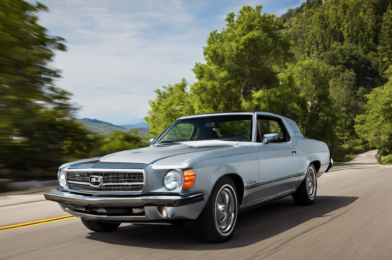**Introduction:**
Improving your vehicle’s fuel efficiency is a great way to save money and reduce your environmental impact. With gas prices soaring and environmental concerns growing, it’s no surprise that many drivers are looking for ways to get more miles out of every gallon. Luckily, there are several simple hacks you can use to increase your fuel efficiency and stretch your dollar further.
**Tip 1: Keep Your Tires Properly Inflated**
Underinflated tires can significantly decrease your fuel efficiency. Ensure you regularly check your tire pressure and keep them inflated to the recommended pressure listed in your car’s manual or on the driver’s door pillar. This simple step can improve your gas mileage by up to 3%. Not only will you save money on gas, but you’ll also extend the life of your tires.
**Tip 2: Slow Down and Drive Sensibly**
Aggressive driving, such as rapid acceleration and speeding, can lower your gas mileage by up to 33% on highways. Instead, drive sensibly and maintain a steady speed. Observe speed limits and, when safe to do so, use cruise control to help maintain a constant speed and save fuel.
**Tip 3: Plan Your Route Efficiently**
Combining errands into one trip and planning your route efficiently can help you save fuel. Several apps can help you optimize your route, reducing unnecessary mileage and saving you time and money. Planning your route can also help you avoid heavy traffic areas, which can improve your fuel efficiency.
**Tip 4: Keep Your Vehicle Properly Maintained**
Regular vehicle maintenance is crucial for optimal fuel efficiency. Ensure you follow the recommended service schedule in your owner’s manual. Simple tasks such as changing the oil and air filters, and keeping the engine tuned, can make a big difference. A well-maintained vehicle can improve your gas mileage by up to 4%.
**Tip 5: Use the Right Motor Oil**
Using the motor oil recommended by your car’s manufacturer can improve your fuel efficiency. Look for oils marked with the “Energy Conserving” label, which indicates that the oil has passed rigorous standards for friction and viscosity. Using the right motor oil can improve your gas mileage by up to 2%.
**Tip 6: Lighten Your Load**
Carrying unnecessary weight in your vehicle reduces fuel efficiency. Remove any extra items from your trunk or backseat, and avoid using roof racks or cargo boxes unless necessary. For every 100 pounds of extra weight, your miles per gallon can decrease by up to 2%.
**Tip 7: Utilize Cruise Control**
In addition to driving sensibly, utilizing cruise control on highways and open roads can help maintain a constant speed, which is more fuel-efficient than constantly adjusting your speed. This is especially beneficial on long road trips, where you can save a significant amount of fuel by letting cruise control do the work.
**Tip 8: Minimize Idle Time**
Idling wastes fuel and contributes to air pollution. Turn off your engine if you anticipate being stationary for more than a minute. Today’s vehicles are designed to warm up quickly, so there’s no need to idle your engine for an extended period, even on cold days.
**Tip 9: Choose the Right Octane Rating**
Unless your vehicle specifically requires it, there’s no need to use premium gasoline. Using a higher octane rating than what is recommended in your owner’s manual does not improve performance or fuel efficiency. In fact, it can cost you more at the pump.
**Tip 10: Consider a Fuel Efficiency Upgrade**
If you’re in the market for a new vehicle, consider choosing a model with high fuel efficiency ratings. Hybrid and electric vehicles offer significant fuel cost savings over time. Even if you’re not ready for an electric car, many conventional cars offer excellent fuel efficiency, helping you save money with every mile.
**Conclusion:**
Improving your fuel efficiency doesn’t have to be complicated or costly. By following these simple tips and adopting more fuel-efficient driving habits, you can start saving money and reducing your environmental impact today. Remember, even small changes can make a big difference over time, so why not give these hacks a try and see the benefits for yourself? Happy, efficient driving!




